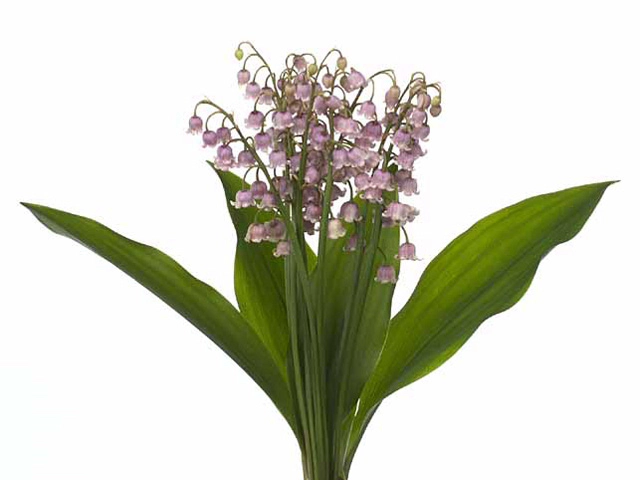Convallaria majalis 'Rosea'

| Flower type | Single |
| Flower scent | Sweet scented |
| Winter hardness | Excellent (USDA-zone 1,2,3,4) |
| Flower color | Purple-light violet-076A |
| Leaf, general shape | Elongate |
| Flower diameter | 1 - 10 mm |
| Inflorescence | Raceme |
| Light conditions | Semi-shades |
| Leaf, main color | Dark green |
| Toxicity (if consumed) | Highly toxic |
| Moisture requirements | Moist |
| Soil type | Humus rich |
The Convallaria majalis 'Rosea', commonly known as Lily-of-the-Valley, is a beautiful and delicate flower that adds a touch of elegance to any garden. This perennial plant is cherished for its sweet scent and stunning purple to light violet flowers, which bloom in a charming raceme inflorescence.
One of the remarkable attributes of the Lily-of-the-Valley is its winter hardiness. It can withstand even the harshest of winters, thriving in USDA zones 1, 2, 3, and 4. This makes it a popular choice for gardeners in colder regions who desire a touch of natural beauty during the winter months.
The single-flowered Lily-of-the-Valley offers a timeless beauty with its elongated shape leaves and dark green hue. These leaves provide an exquisite backdrop for the lovely flowers that adorn the plant. Though small in size, with a diameter ranging from 1 to 10 mm, the flowers create a stunning visual impact.
As for growing conditions, Lily-of-the-Valley prefers semi-shades. It thrives in areas with partial sunlight, making it an ideal choice for gardens that don't receive full sunlight throughout the day. This also helps to protect the delicate flowers from scorching in direct sunlight.
It is important to note that while Lily-of-the-Valley is beloved for its enchanting beauty, it carries a toxic nature if consumed. The plant contains substances that can be harmful if ingested, so caution must be exercised, especially in households with small children or pets. However, when handled with care, this toxicity does not diminish the plant's allure.
Moisture requirements for Lily-of-the-Valley are relatively easy to meet, as it thrives in moist conditions. Regular watering and well-draining soil are necessary to ensure a healthy and thriving plant. The Lily-of-the-Valley prefers soil that is humus rich, providing it with the necessary nutrients for optimal growth.
In conclusion, the Convallaria majalis 'Rosea' or Lily-of-the-Valley is a captivating flower that offers a sweet scent, stunning color, and winter hardiness. With its elongate leaves, raceme inflorescence, and dark green foliage, it brings a touch of elegance to any garden. While it requires semi-shades and moist soil, it rewards gardeners with its timeless beauty and delicate charm. Just remember to handle with care due to its highly toxic nature if consumed.
Market availability index by month:
| Jan. | Feb. | Mar. | Apr. | May | Jun. | Jul. | Aug. | Sep. | Oct. | Nov. | Dec. |
|---|---|---|---|---|---|---|---|---|---|---|---|
| - | - | 1 | 3 | 3 | 3 | 4 | 3 | - | - | - | - |